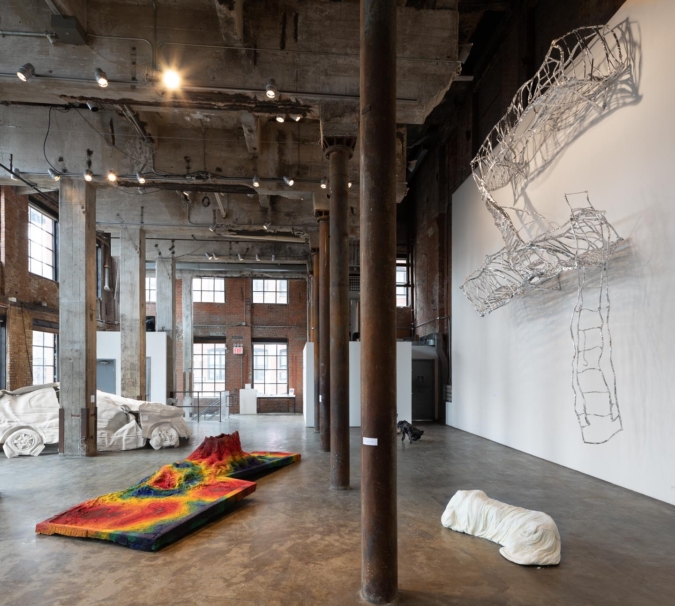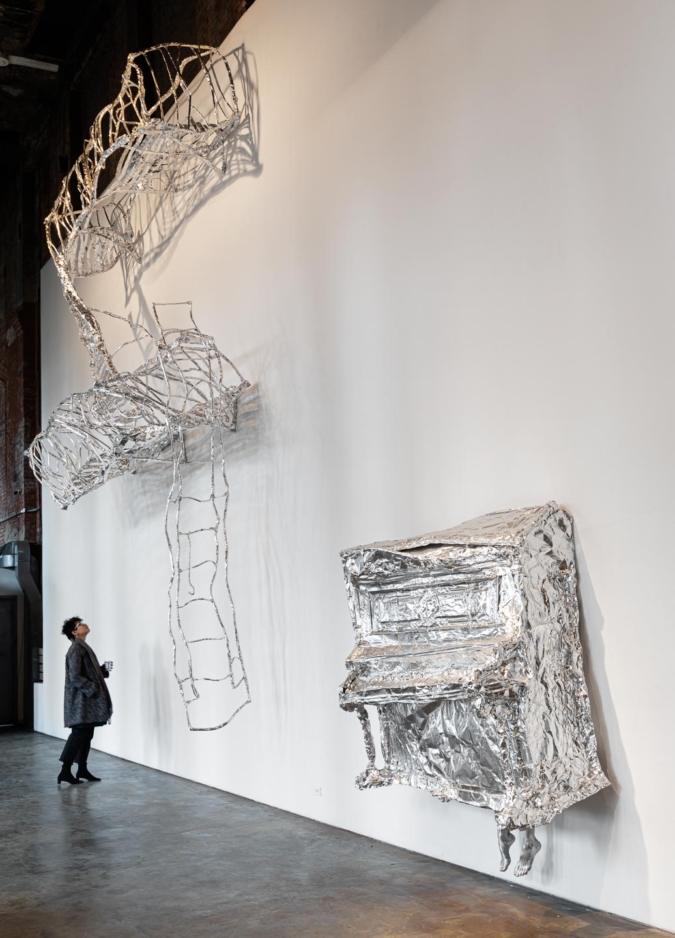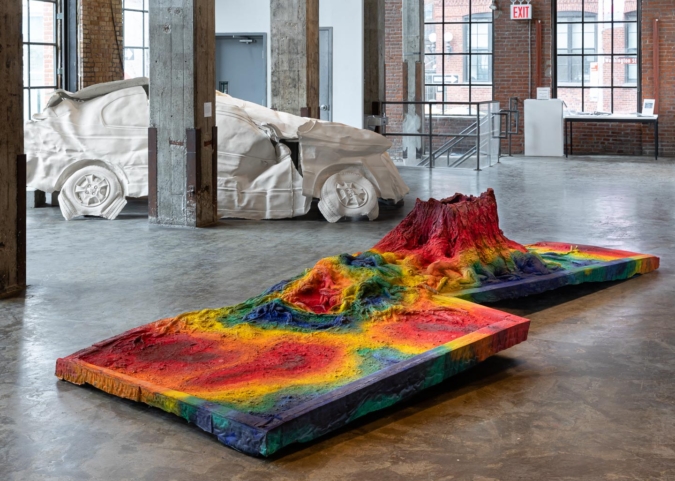Jude Tallichet
Jude Tallichet lives and works in Queens, NY. She has exhibited nationally and internationally in venues such as the Konsthallen in Gothenburg, Sweden, The Shanghai Biennial in China, and many more.She had six solo exhibitions at Sara Meltzer Gallery, NYC, from 2000 to 2009. She participated in the inaugural Greater New York Show at PS1 MOMA, the “Treble” exhibition at Sculpture Center, and the “Brooklyn Next” exhibition at the Brooklyn Museum of Art. She was a featured performer in the Iron Artist Event at PS 1 MOMA. Jude was a Senior Fulbright Fellow in 1996 and has received fellowship grants from the National Endowment for the Arts and from the New York Foundation for the Arts. She has received several residencies including the Rosa de la Cruz Collection and MacDowell Colony. She is Professor Emeritus, Sculpture, at the Tyler School of Art, where she taught 1987-2016. Jude was a founding member of the band Ultra Vulva and has collaborated with artists and musicians, including Jeanine Antoni, Kristin Lucas, and more. She is currently working with artist and musician Adam Chad Brody on a cricket farm and music project at partycrickets.com
QUESTION:
Most of your work originates from a source – a fire escape, a piano, a sidewalk. Once you have worked your sculptural transformation the source is made ineffective, unusable. Strong things become weak, structured things become unstructured, and soft things like clothes become solid. The functional becomes unfunctional, even anti-functional. The muffins in Save It For Me obviously stop functioning because bronze cannot be eaten. Possibly, though, the pile of so many muffins suggests that the excesses of material goods in our economy is anti-functional as well . When you choose an object as a starting point are you thinking of ways to disable its function? I feel you have created a world, a universe of the anti-functional yet your process as a sculptor seems very down-to-earth and pragmatic. You apparently enjoy the workaday and utilitarian activities of the studio, as if the workshop were the place of everyday functionality. Will you talk about the interplay of the functional, the unfunctional and the anti-functional in your sculpture.
ANSWER:
I’m not necessarily thinking of ways to disable function in the objects I choose to transform or make-over. I’m very interested in the aura surrounding objects, their haunted and mysterious quality, and how I can exploit that hauntedness to reveal something true or uncanny about them. For example, I understand a fire escape’s function but I don’t know who in the past has used it or for what. Who made it? Where did the metal bars come from? We understand the object’s function but that doesn’t mean we know the object, its history or its stories. The gap between its function and the object itself brings me to question its history. I wonder a lot about time and about how things that attract my attention exist in the present and will exist in future, in a thousand years, maybe. I understand how entropy works, but I can’t help but wonder, could there be–at the end of everything—the possibility of transformation and alchemy instead of decay into sameness? I’m trying to figure out for myself if we can know and celebrate an object through the study of its function/nonfunction.
My process as I work with these objects is, as you pointed out, very banal, physical, and labor intensive. I love that. I enjoy using my body in a strange dance with different flatfooted steps as I work to discover the end thing. The studio work is the essence of functionality for me. I study the object. I take measurements. I choose a material to remake it. And all that follows. I understand work. Sometimes it’s really boring, but I don’t care, I have my mission laid out for me. I understand the steps in the process in a way I can never know the essence of the object I’m trying to transform. My labor newly haunts the object I re-create, rendering it non functional! So the new object has the old stories of its function and the new story I made of its nonfunction. It becomes a sensuous thing. In the end, I want to pay homage to the spectrality of the object, with hope and optimism in the outcome.








